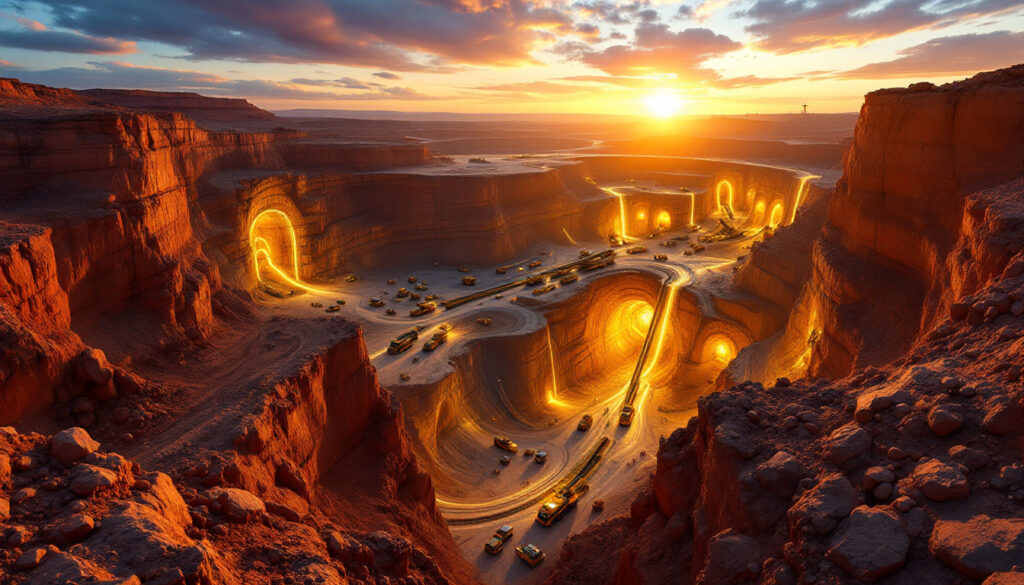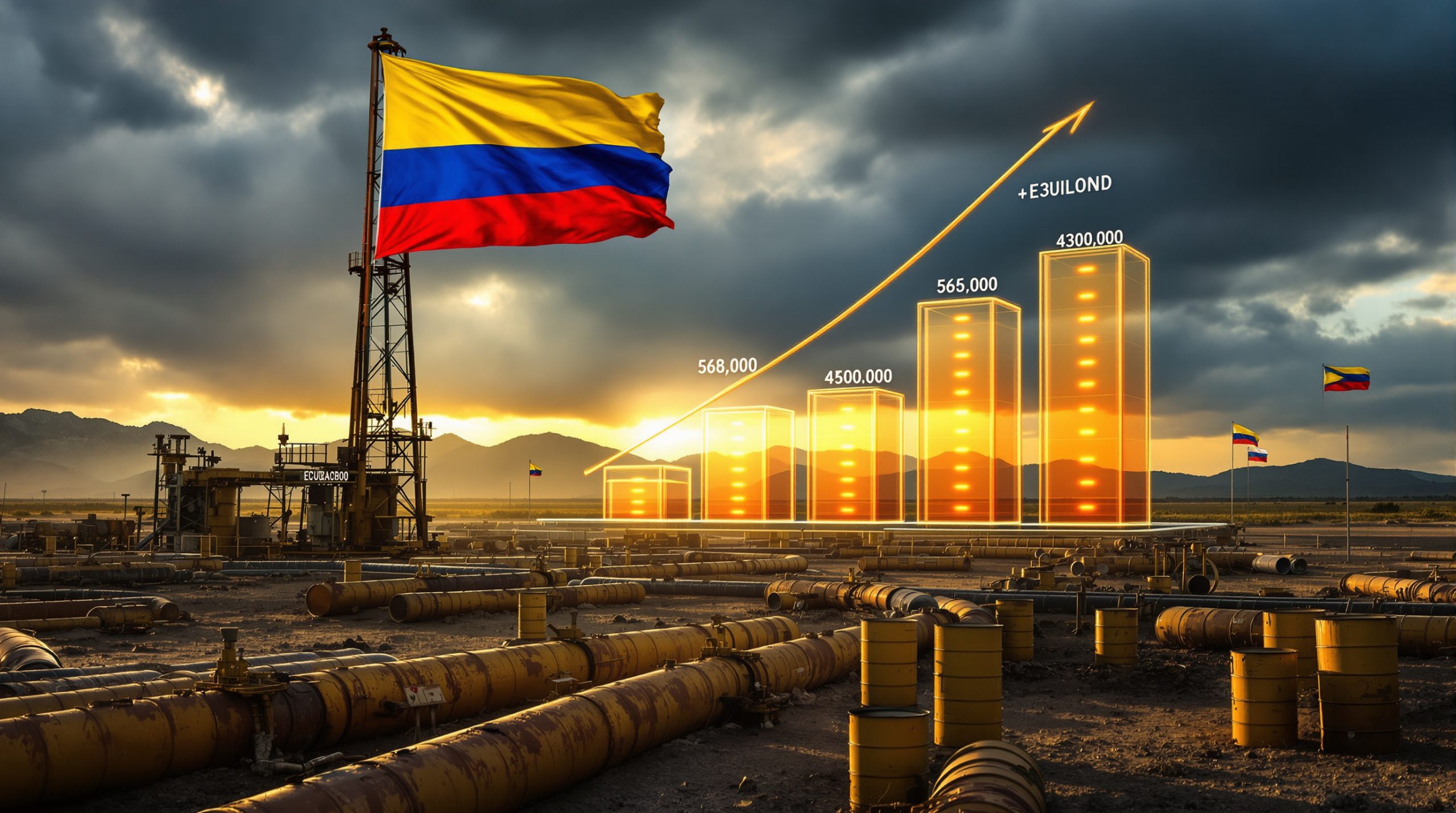Gruyere Gold Mine Underground Study: Unlocking Long-Term Potential
The Gruyere gold mine, located in Western Australia's northeastern Goldfields region, represents one of Australia's most significant gold mining operations of the past decade. Established as a 50:50 joint venture between Gold Road Resources and Gold Fields in 2016, with open-pit operations commencing in 2019, Gruyere has consistently delivered impressive production results. Currently operating as an open-pit mine with reserves of approximately 3.5 million ounces at 1.2 g/t gold, the operation is now looking toward its underground potential to substantially extend its operational lifespan.
The mine's current open-pit configuration spans approximately 2.1 kilometers in length, 800 meters in width, and reaches depths of around 300 meters. This established infrastructure provides an excellent foundation for the proposed underground expansion, which aims to access deeper, potentially higher-grade gold deposits beneath the existing pit floor.
As Duncan Gibbs, Gold Road Resources Managing Director and CEO, notes: "The underground mining potential has the ability to transform Gruyere into a multi-decade life mine, and is expected to add material value to the Gruyere JV and Gold Road shareholders."
Underground Scoping Study Results
SRK Consulting recently completed a comprehensive mining feasibility studies for the Gruyere operation, presenting a sub-level cave underground mining option that represents a technically viable pathway to accessing deeper ore bodies. The economic modeling for this study was based on a gold price of $2,240 per ounce, which provides a conservative foundation for assessing the project's financial viability.
The study, which took approximately 14 months to complete and involved 12 geotechnical boreholes, was designed to confirm key technical inputs and thoroughly investigate both technical and economic viability factors. Notably, the sensitivity analysis revealed that the project's Net Present Value (NPV) increases by approximately $120 million for every $100 per ounce rise in gold market analysis, highlighting the operation's potential upside in favorable market conditions.
New Exploration Target Estimates
Perhaps most compelling are the new exploration target estimates, which indicate a range of 25-31 million tonnes of material at grades between 1.20-1.47 grams per tonne of gold. This represents a potential addition of 1-1.5 million ounces on a 50% basis to each joint venture partner. These figures are particularly significant when compared to the current mineral resource (exclusive of ore reserve) of 45 million tonnes at 1.51g/t for 2.2 million ounces.
The sub-level cave mining method was selected specifically for its cost efficiency in large, uniform deposits like Gruyere. The planned cave dimensions include a 400-meter vertical extent, a 150-meter footprint, and 15-meter sub-level intervals, designed to optimize ore recovery while maintaining geotechnical stability. The plan also incorporates dual redundancy ore pass systems to mitigate potential blockage risks, a common concern in cave mining operations.
Financial Projections
The financial aspects of the underground expansion are substantial, with initial capital infrastructure costs estimated at $470 million. The total estimated costs for the project reach $588 million (on a 100% basis), which includes a prudent 30% contingency allocation to account for potential cost overruns or unforeseen challenges. This level of investment underscores the joint venture partners' confidence in the long-term value proposition of the underground expansion.
When comparing Gruyere's proposed underground operation to similar projects, it's worth noting that Cadia East in New South Wales employs a similar sub-level cave mining approach and achieves throughput of approximately 28 million tonnes per annum at grades of around 0.8 g/t gold.
How Will the Underground Development Proceed?
The joint venture has committed a significant $26 million investment to further evaluate and define the underground potential at Gruyere. This funding will support an ambitious 60,000-meter drilling program specifically targeting ore zones up to 700 meters deep, substantially beyond the current pit floor.
Ausdrill Ltd has secured an $18 million contract to complete 40,000 meters of diamond core drilling as part of this program, deploying three Sandvik DD422i drilling rigs operating at approximately 95% utilization. The drilling will incorporate gyroscopic steering technology to achieve azimuth accuracy of ±0.5 degrees, ensuring precise targeting of the deeper ore zones.
The Chief Geologist at Gold Road notes that "real-time data integration from 3D seismic surveys reduces geological uncertainty," which will be crucial in accurately defining the underground resource. This comprehensive drilling program is expected to be completed by mid-2026, providing the necessary geological data to support a detailed pre-feasibility study scheduled for completion later that year.
Mining Methodology
The sub-level cave underground mining approach selected for Gruyere has been carefully designed to optimize extraction while maintaining economic viability. This method involves developing horizontal tunnels (sub-levels) at regular vertical intervals throughout the ore body, from which production drilling and blasting occur. As material is extracted from the lower levels, the ore above gradually caves in, reducing the need for extensive ground support while maximizing recovery.
The ventilation plan for the underground operation includes a 450 m³/s capacity system utilizing twin surface exhaust fans, which will ensure safe working conditions at depth. Additionally, the mine plan includes a timeline that projects portal excavation to begin in Q3 2025, with ore commissioning targeted for Q1 2027.
The expansion also has a substantial workforce component, with plans for approximately 350 underground roles, including a 30% local Indigenous employment target that aligns with the operation's community engagement objectives.
What Does This Mean for Gruyere's Future?
The underground expansion has the potential to transform Gruyere into a truly world-class, multi-decade mining operation. Current projections suggest a life extension of approximately 14 years beyond 2030, with production averaging around 200,000 ounces per annum at an All-In Sustaining Cost (AISC) of approximately $1,150 per ounce.
From a financial perspective, the expansion project carries an estimated Net Present Value of $1.2 billion (using an 8% discount rate), representing significant value creation for the joint venture partners and their shareholders. As noted by RBC Capital Markets, "The underground could reposition Gruyere as a Tier-1 asset globally," reflecting the project's potential to elevate the mine's status within the global gold mining landscape.
The expansion also carries significant economic implications for the surrounding region, with projections indicating a potential 23% increase in Kalgoorlie service sector revenue between 2023 and 2024. Additionally, the operation is expected to contribute approximately $45 million in annual royalty payments to the Western Australian Government, highlighting its broader economic importance.
Duncan Gibbs further emphasized the strategic significance of the underground development, stating: "The results of this underground study, coupled with the commitment of $26 million from the joint venture to confirm the orebody at depth, take us another step closer to realising the long-term value of mining operation at Gruyere."
Modern digital transformation in mining technologies will play a crucial role in the Gruyere underground project's success, with integrated systems for real-time monitoring and automated equipment improving both safety and efficiency.
FAQs About the Gruyere Underground Study
What is the current ownership structure of Gruyere?
Gruyere operates as a 50:50 joint venture between Gold Road Resources and Gold Fields. This partnership was established in 2016, with both companies sharing equally in both investment requirements and returns from the operation.
What methodology was used for the underground mining study?
The study, conducted by SRK Consulting, presents a sub-level cave underground mining option. This approach was selected based on the geometry and characteristics of the ore body, with the goal of maximizing recovery while maintaining economic viability. The study incorporated comprehensive geotechnical analysis to ensure the stability of the proposed mining method.
When will the pre-feasibility study be completed?
The pre-feasibility study is expected to be completed in 2026, following the conclusion of the 60,000-meter drilling program. This timeline allows for thorough analysis of the drilling results and refinement of the mining plan before proceeding to the more detailed feasibility stage.
How deep will the exploration drilling target?
The drilling program will target ore zones up to 700 meters deep, substantially beyond the current pit floor. This exploration will help define the extent and grade of the deeper portions of the ore body, providing critical data for the pre-feasibility study and subsequent mine planning.
What environmental considerations are being addressed?
The expansion includes a comprehensive water management plan that aims to recycle approximately 85% of water from the tailings storage facility, minimizing the operation's impact on local water resources. Additionally, the project includes progressive rehabilitation bonding of $75 million to ensure proper site closure and rehabilitation upon completion of mining activities.
In the context of broader mining investments insights, the Gruyere underground project represents a strategic approach to maximizing resource value while maintaining environmental responsibility.
How will the underground operation benefit local communities?
The joint venture has allocated $2.1 million in community grants to the Yilka Native Title Group for the period 2024-2026, reinforcing its commitment to positive community engagement. Additionally, the operation's Indigenous employment target of 30% for underground roles demonstrates a commitment to providing economic opportunities for local Traditional Owners.
What safety systems will be implemented in the underground operation?
The underground mine plan includes implementation of the CAT MineStar collision avoidance system, which uses advanced technology to prevent vehicle-to-vehicle and vehicle-to-personnel incidents in the confined underground environment. This system represents industry best practice for underground safety management.
According to the initial drilling results, the Gruyere underground potential could significantly impact the gold market outlook 2025 as investors increasingly focus on projects with long-term production potential, as detailed in the Gruyere technical report.
Looking to Invest in the Next Major Gold Discovery?
Discover significant mineral opportunities before the market with Discovery Alert's proprietary Discovery IQ model, which instantly analyses ASX announcements to identify high-potential gold discoveries like the Gruyere expansion. Explore why major mineral discoveries can lead to exceptional returns by visiting the Discovery Alert discoveries page and position yourself ahead of other investors.




